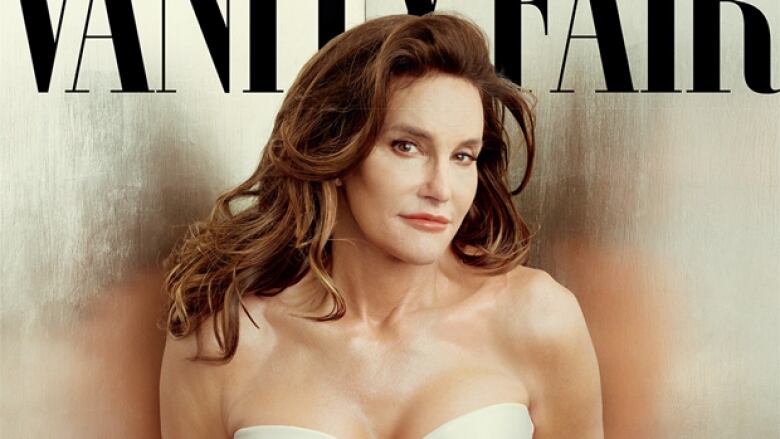Caitlyn Jenner's transition doesn't represent most transgender experiences
Jenner's stunning Vanity Fair cover seems like a fairytale story

Less than two months afterBruce Jennerrevealed to the world that "for all intents and purposes, I am a woman," during a prime-time TV interview, she donned a white bustieronthe cover of Vanity Fairas Caitlyn Jenner.
Famed photographer Annie Leibovitz expertly captured Jenner's first public appearance as Caitlyn. Some people compared Jenner'sbeauty to that of Oscar-winning actress Jessica Lange.
But what's being presented as a seemingly fairytale story is not thereality for many transgender people who face long wait lists and costly procedures that public health services don't necessarily cover.
In addition, while there are increasingly more transgender people who are welcomed by their families andcommunities, some face systemic transphobia through the denial of health care, difficulty finding a place to live orworkplace discrimination.
"These are all things that [Jenner]doesn't have to face on a day-to-day basis," says Jack Hixson-Vulpe, a 28-year-old education and training facilitator for The 519, a city of Toronto agency that helps support transgender peopleand other groups.
Lengthy wait times
Jenner's estimated $100 million US net worth means she wouldn't be subject to lengthy wait lists for publicly funded surgery, says Hixson-Vulpe, who has undergone his own transition.

In Ontario, only Toronto's Centre for Addiction and Mental Health can approve someone for gender-changingsurgery and referred patientswait about a year for their first appointment, according to its website. Ittakes several months moreto have surgery approved, and then applicants must wait for a surgery date.
People transitioning from male to female wait about six months for genital surgery, says Pierre Brassard, a Montreal plastic surgeon who performs gender reassignment surgeries. Those seeking a female to male transformation can wait up to a year and a half, depending on the required procedure.
Costly surgeries
Most Canadian territories and provinces fund some form of gender reassignment surgery, but there is generally other costly work involved that those transitioning may want.
"It's hugely expensive," says Trish McNorgan, a 65-year-old transgender woman living in Winnipeg. "I spent a small fortune on my transition."
I spent a small fortune on my transition.- TrishMcNorgan, a 65-year-oldtransgenderwoman
The military covered her gender reassignment surgery in 2009, while she was in the air force.
Still, McNorgan paid about $20,000 for facial feminization surgery, some $6,000 for hair implants, and another several thousand for breast implants, fat grafting and electrolysis to remove facial hair.
Some medical costs associated with transitioning, like hormone supplements, may continue for life, saysHixson-Vulpe.
There are also potential non-medical expenses, he says, like new clothes, makeup or voice lessons. Not everyone has the $30,000 to $50,000 to spend on all these procedures, he says.
Family strain
Another factor when transitioning is the "extreme amount of anxiety" that can arise whendealing with potentially unsupportivepeople, saysMcNorgan.
Herelderly mother refuses to speak to her now, and the change temporarilystrained some other relationships in herlife.
In 2011, a study by a U.S. group looking into transgender issues found that of its6,450 respondents55 per cent said their family relationships were weaker after coming out. Fortyper cent reported at least one family member "chose not to speak or spend time" with them afterwards.

Before her transition, McNorgan struggled with alcoholism and drug addiction, usingsubstances as a coping mechanism.
She attempted suicide more than once. The last "pretty serious" attempt partly prompted her transition.
"I reached the point where, you know, I really couldn't go on with the way things were," she says.
The U.S.transgendersurvey found 41 per cent of respondents had attempted suicide.
The 2015 Canadian Trans Youth Health Survey by the University of British Columbia surveyed more than 900 transgender youth andfound that more than one third of 14 to 25 year olds had attempted to kill themselves at least once.
Employment, housing, health care
Another hidden costof transitioning is the possible "domino effect" of discrimination, saysHixson-Vulpe.
Transgender people often face employment, housing and health-care discrimination, he says. Some even face violence.
He hears stories of transgender people losing their jobs or not being hired because of their transition.
In the U.S.survey, respondentswere nearly four times more likely than the general population to live in a household bringing in less than $10,000 US annually and were twice as likely to be unemployed.
Some landlords will reject transgender applicants and some doctors will refuse to treat transgender patients, Hixson-Vulpesays.
Jenner has 'a lot of guts'
Jenner's transition has obviously been different than the norm, but that isnot to say it waseasy, or withoutfamily disapproval or emotional strain, as the tabloids pointed out.
"There's no less a mental toll on [her] than there is on anybody that goes through this," says McNorgan. "It's the hardest thing that you ever do."
"It takes a lot of guts for somebody in a position like she's in to do this," she adds. Jenner's"life is right there for everyone to see."
But as Jenner and other celebrities publicly come out, it makes it "less difficult" for others, she says.
"I would have been tarred and feathered if I did this in the '50s," she says of her transition. "The only waythat it's going to get better for trans people is for information to get out there and for people to tell their stories."
The National Gay and Lesbian Task Force and the National Centre for Transgender Equality survey was distributed in English and Spanish by more than 800 trans organizations, but was inaccessible to some ethnic minority groups due to language barriers.
The University of British Columbia survey questioned 923 young people between 14 and 25 years old across Canada, with the exception of the Yukon and Nunavut. The majority of respondents reported being white and more than three quarters spoke only English at home. The survey asked different questions of younger respondents (ages 14-18) and older respondents (19-25).












_(720p).jpg)


 OFFICIAL HD MUSIC VIDEO.jpg)
.jpg)



























































































